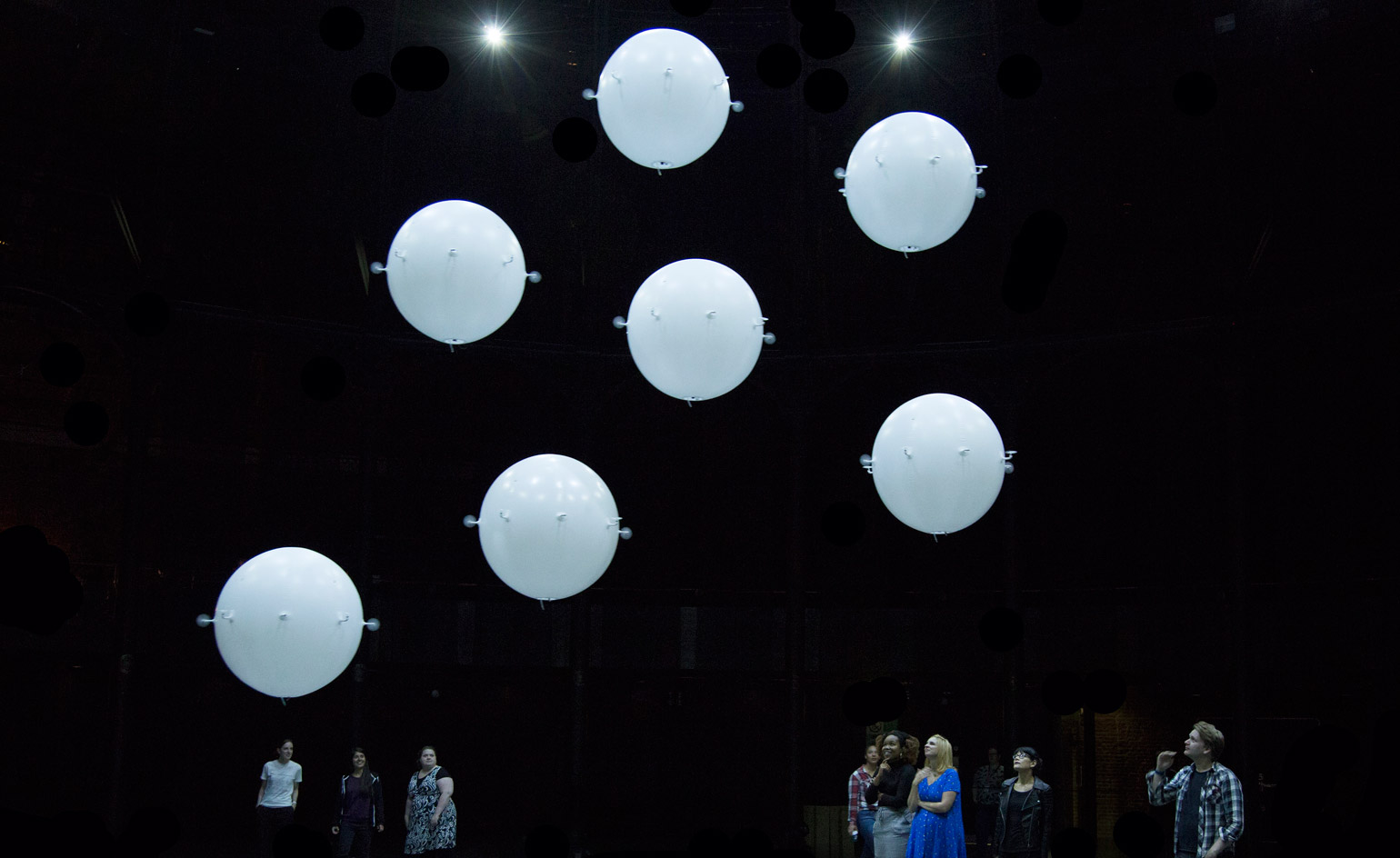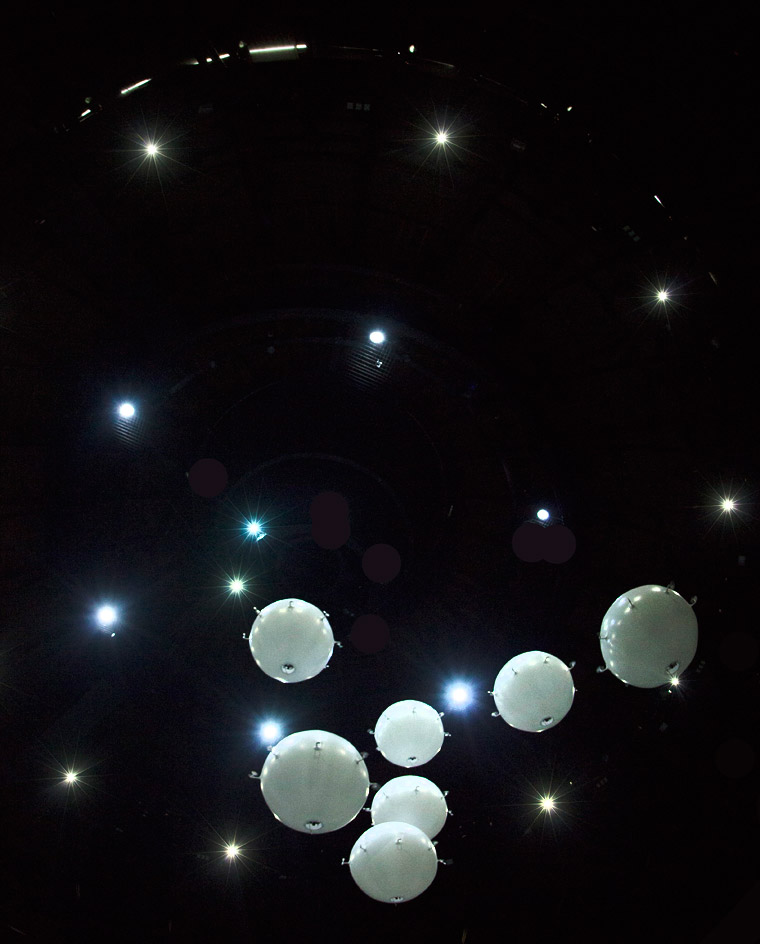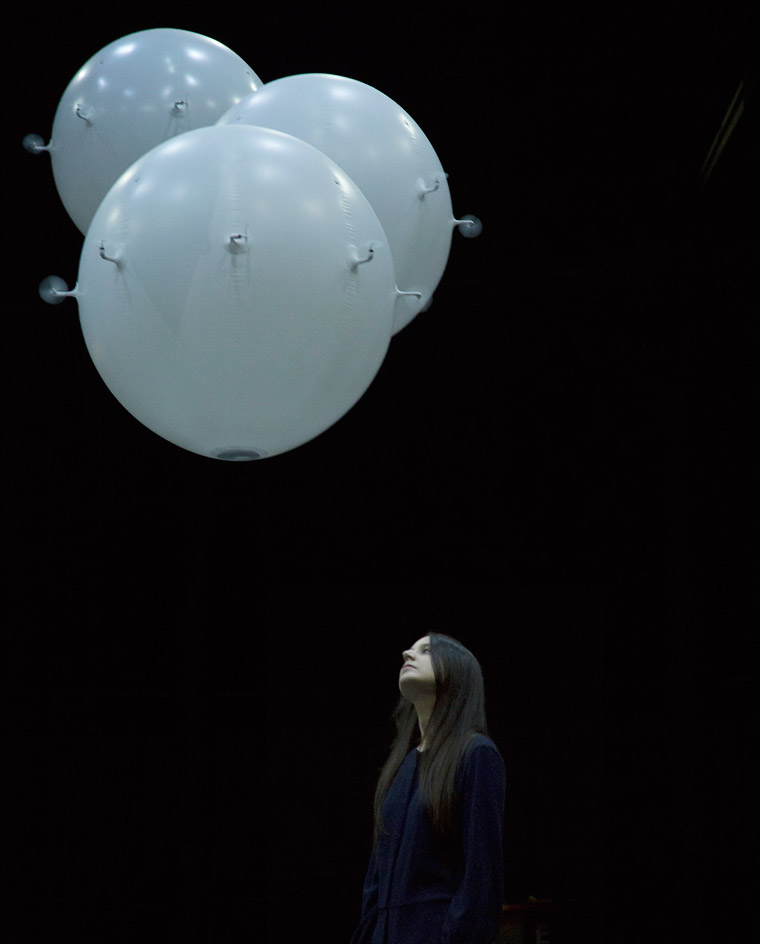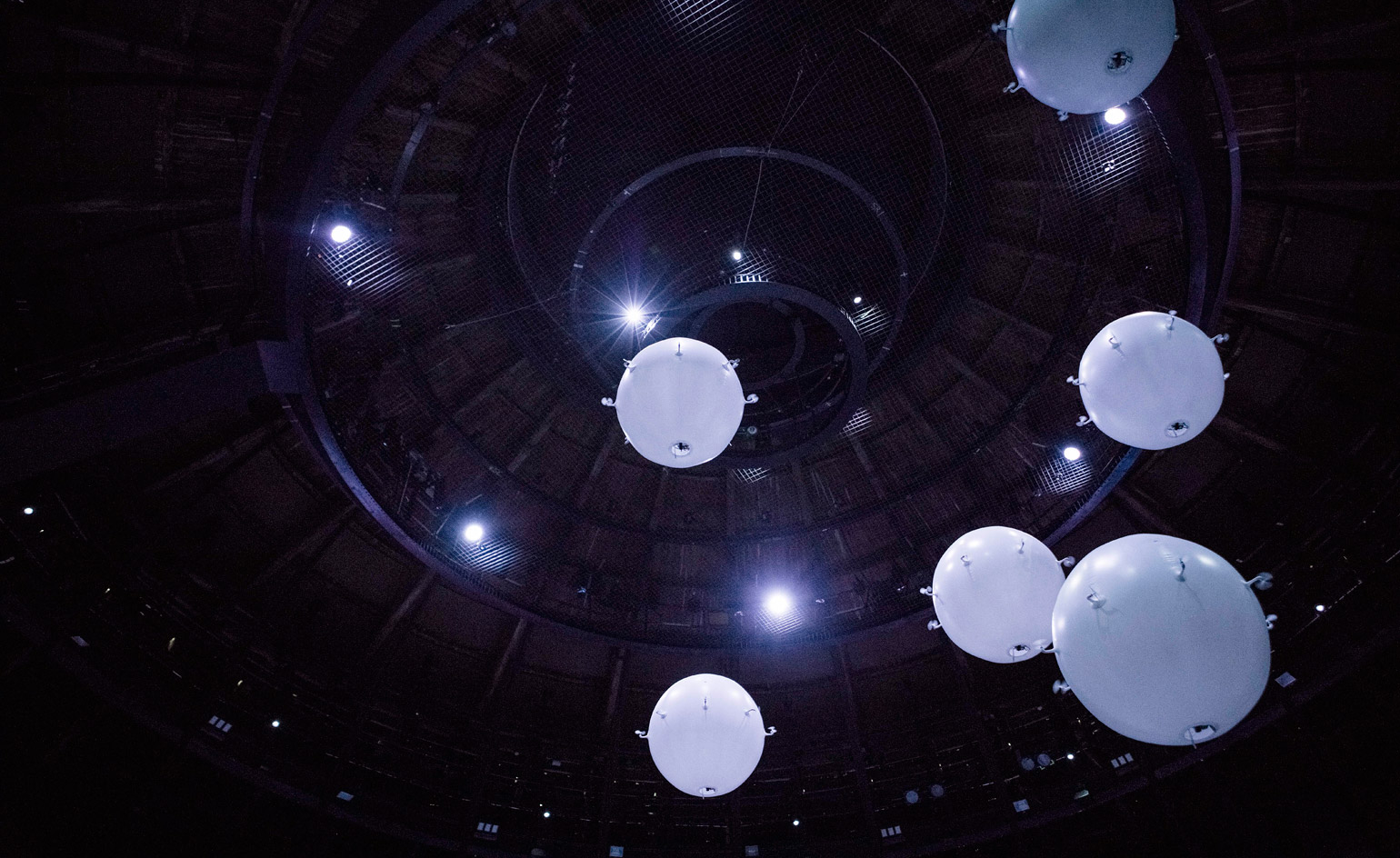Spheres of influence: Wayne McGregor dances the line between man and machine

‘There isn’t really an English word for what we have created. It's kind of an experience; a performance; a living artwork.’ So says Random International’s dramaturg Heloise Reynolds, of the practice’s latest installation, unveiled in London last week.
Staged in the echoing Roundhouse theatre, the art-meets-technology studio has designed seven helium-filled white globes that hover and swarm around the space on tiny propellers. In one moment, they’re pack-like, curious. In others, they’re inanimate, programmed, droning. ‘We’re trying to create a sense of otherness,’ says Random International co-founder Hannes Koch. ‘We want people to feel like aliens. We want to say, “This is how it feels to be intimately exposed to a very advanced organism.”’
Dreamt up in an unlikely industrial estate in Balham, where Random International’s engineers have spent the last five months buried under complex behavioural data maps, the spheres’ flocking behaviour is determined by generative algorithms built to resemble human characteristics. Able to react to their environment, the computer-controlled orbs select individuals from the audience to hone in on – swooping inquisitively towards them, or sinisterly mirroring their movements. In a landscape of driverless cars, digital butlers and ‘the robots are coming!’, these oddly familiar spheres pull at the tangled thread of what it means to be human in the age of AI.
Frequent Random International collaborator, choreographer Wayne McGregor, has long been fascinated by this ever-slimming intersection between man and machine. Through his futuristic staging and his boundary-defying collaborations, McGregor does more than walk the ‘uncanny valley’, he dances there.
As he has done here, engaging a troop of his dynamic studio dancers to perform underneath the hovering, human-like globes to an electronic score especially composed by Warp Records’ Mark Pritchard. The formidable likes of Edward Watson and Fukiko Takase look anonymous, painted with either a ‘+’ or ‘–’ symbol. They are human magnets, pulling together and pushing apart. The elemental dancers enter into a loose dialogue with the globes, staying low, as the orbs twist into lofty formations overhead.
The human and technological aspects of the exhibition interact seamlessly, a testament to the well-matched collaborators – despite the fact McGregor didn't know exactly how the installation would look and act until it was installed. ‘I got it conceptually, and that was enough,’ he explains.
It helps that the collaborators are ‘on the same page aesthetically’. Instead of shunning technology as a clinical device, both McGregor and Random International use it as a theatrical tool to evoke emotion. ‘I think technology can make you feel something,’ McGregor continues. ‘It’s visceral. It can help the audience to embody a performance.’
That’s exactly what the spheres do here. As the dancers file out, the stage is left empty for audience members to enter into their own duet with the white globes, in what Koch describes as an ‘emotive experiment’. Forgetting our inhibitions, we enter into a game of computerised cloud-gazing, in a display of how the human imagination, and the artificial one, can partner to create something out of this world.

The spheres are programmed using complex algorithms and motion sensors to react intelligently to their surroundings and to bodies in their environment.

Visitors will be surrounded by a mysterious flock of flying spheres in a hypnotic experience created in response to the Roundhouse’s unique architecture.

On Friday and Saturday evenings, the installation will host an immersive new dance work created by Wayne McGregor and featuring Company Wayne McGregor performing with dancers from The Royal Ballet.
INFORMATION
Wayne McGregor’s ‘+/– Human’ performances run until 28 August, and ‘Zoological’ is on view until 31 August. For more information, visit the Roundhouse website, the Random International website and Wayne McGregor’s website
ADDRESS
Roundhouse
Chalk Farm Road
London NW1 8EH
Wallpaper* Newsletter
Receive our daily digest of inspiration, escapism and design stories from around the world direct to your inbox.
Elly Parsons is the Digital Editor of Wallpaper*, where she oversees Wallpaper.com and its social platforms. She has been with the brand since 2015 in various roles, spending time as digital writer – specialising in art, technology and contemporary culture – and as deputy digital editor. She was shortlisted for a PPA Award in 2017, has written extensively for many publications, and has contributed to three books. She is a guest lecturer in digital journalism at Goldsmiths University, London, where she also holds a masters degree in creative writing. Now, her main areas of expertise include content strategy, audience engagement, and social media.
-
 All-In is the Paris-based label making full-force fashion for main character dressing
All-In is the Paris-based label making full-force fashion for main character dressingPart of our monthly Uprising series, Wallpaper* meets Benjamin Barron and Bror August Vestbø of All-In, the LVMH Prize-nominated label which bases its collections on a riotous cast of characters – real and imagined
By Orla Brennan
-
 Maserati joins forces with Giorgetti for a turbo-charged relationship
Maserati joins forces with Giorgetti for a turbo-charged relationshipAnnouncing their marriage during Milan Design Week, the brands unveiled a collection, a car and a long term commitment
By Hugo Macdonald
-
 Through an innovative new training program, Poltrona Frau aims to safeguard Italian craft
Through an innovative new training program, Poltrona Frau aims to safeguard Italian craftThe heritage furniture manufacturer is training a new generation of leather artisans
By Cristina Kiran Piotti
-
 ‘Humour is foundational’: artist Ella Kruglyanskaya on painting as a ‘highly questionable’ pursuit
‘Humour is foundational’: artist Ella Kruglyanskaya on painting as a ‘highly questionable’ pursuitElla Kruglyanskaya’s exhibition, ‘Shadows’ at Thomas Dane Gallery, is the first in a series of three this year, with openings in Basel and New York to follow
By Hannah Silver
-
 The art of the textile label: how British mill-made cloth sold itself to Indian buyers
The art of the textile label: how British mill-made cloth sold itself to Indian buyersAn exhibition of Indo-British textile labels at the Museum of Art & Photography (MAP) in Bengaluru is a journey through colonial desire and the design of mass persuasion
By Aastha D
-
 Artist Qualeasha Wood explores the digital glitch to weave stories of the Black female experience
Artist Qualeasha Wood explores the digital glitch to weave stories of the Black female experienceIn ‘Malware’, her new London exhibition at Pippy Houldsworth Gallery, the American artist’s tapestries, tuftings and videos delve into the world of internet malfunction
By Hannah Silver
-
 Ed Atkins confronts death at Tate Britain
Ed Atkins confronts death at Tate BritainIn his new London exhibition, the artist prods at the limits of existence through digital and physical works, including a film starring Toby Jones
By Emily Steer
-
 Tom Wesselmann’s 'Up Close' and the anatomy of desire
Tom Wesselmann’s 'Up Close' and the anatomy of desireIn a new exhibition currently on show at Almine Rech in London, Tom Wesselmann challenges the limits of figurative painting
By Sam Moore
-
 A major Frida Kahlo exhibition is coming to the Tate Modern next year
A major Frida Kahlo exhibition is coming to the Tate Modern next yearTate’s 2026 programme includes 'Frida: The Making of an Icon', which will trace the professional and personal life of countercultural figurehead Frida Kahlo
By Anna Solomon
-
 A portrait of the artist: Sotheby’s puts Grayson Perry in the spotlight
A portrait of the artist: Sotheby’s puts Grayson Perry in the spotlightFor more than a decade, photographer Richard Ansett has made Grayson Perry his muse. Now Sotheby’s is staging a selling exhibition of their work
By Hannah Silver
-
 From counter-culture to Northern Soul, these photos chart an intimate history of working-class Britain
From counter-culture to Northern Soul, these photos chart an intimate history of working-class Britain‘After the End of History: British Working Class Photography 1989 – 2024’ is at Edinburgh gallery Stills
By Tianna Williams